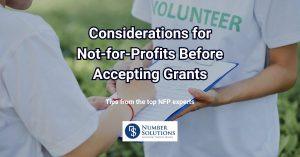» Not-for-Profit » NFP Taxation » Navigating the ATO: A Guide to Not-for-Profit Tax Reporting Obligations
Navigating the ATO: A Guide to Not-for-Profit Tax Reporting Obligations
Navigating the Australian Taxation Office (ATO) can be a daunting task, especially for not-for-profit (NFP) organizations. This guide aims to simplify the ATO’s tax reporting obligations, providing clarity on the essential aspects that NFPs need to comprehend.
Understanding the ATO and Not-for-Profit Entities:
The ATO is like the referee ensuring everyone plays by the tax rules. For NFPs, this means enjoying certain tax benefits while also fulfilling specific obligations. Understanding this dynamic is key to smooth operations.
Tax Concessions for NFPs:
NFPs are entitled to tax concessions – perks that can lighten the financial load. These include income tax exemption, goods and services tax (GST) concessions, and fringe benefits tax (FBT) exemptions. But, of course, there are rules to follow.
Income Tax Exemption Simplified:
Most NFPs get a pass on income tax if they’re doing good things for the community. Keeping records straight and focusing on charitable purposes is the name of the game.
GST Concessions:
If an NFP’s yearly turnover is under $150,000, GST is like a distant relative – not much of a concern. But cross that threshold, and registering for GST becomes a must, bringing along some reporting responsibilities.
FBT Exemptions Unveiled:
Certain benefits provided to employees or associates might usually attract fringe benefits tax (FBT). However, NFPs often get a pass on this – yet another benefit to cherish. Just remember to keep track of those benefits.
DGR Status Decoded:
Becoming a Deductible Gift Recipient (DGR) is like winning a golden ticket. It allows NFPs to receive tax-deductible donations. The process involves ATO endorsement and sticking to some guidelines. And, of course, maintaining a transparent financial record is key.
Annual Information Statements Unveiled:
Think of Annual Information Statements as the NFP’s report card. Submitting these to the Australian Charities and Not-for-profits Commission (ACNC) is a requirement. It’s a snapshot of the NFP’s activities, finances, and how it’s governed. Timely and accurate submissions keep the compliance ship sailing smoothly.
The Art of Record-Keeping:
Records are the unsung heroes of NFPs. They back up everything, making tax return prep a breeze, helping with audits, and proving that the NFP is ticking all the reporting boxes.
Understanding the dance between the ATO and NFPs is like mastering a well-choreographed routine. It ensures that the NFP not only reaps the benefits but also contributes to a transparent and accountable sector. Simplifying the tax puzzle lets NFPs keep their eyes on the mission – making a positive impact in the community.
Conclusion
In conclusion, understanding and navigating the ATO’s tax reporting obligations is essential for not-for-profit entities. This guide aims to demystify the complexities, offering a simplified approach to compliance. By adhering to these reporting requirements, NFPs can not only maintain their tax concessions but also contribute to a transparent and accountable sector. Embracing clarity in tax reporting ensures that the focus remains on the organization’s mission, advancing charitable causes for the greater good.
Related Articles:






